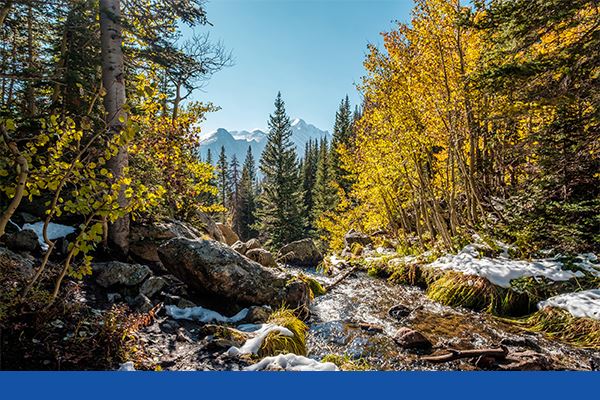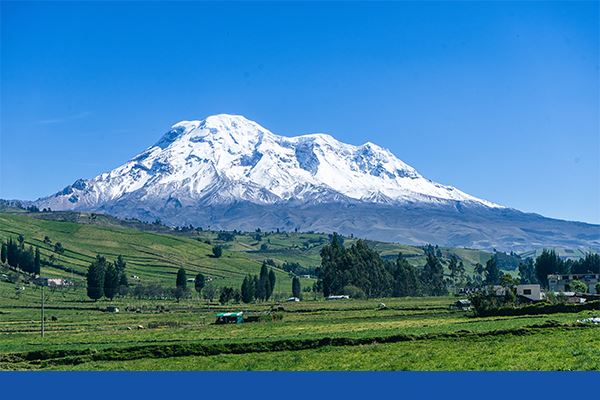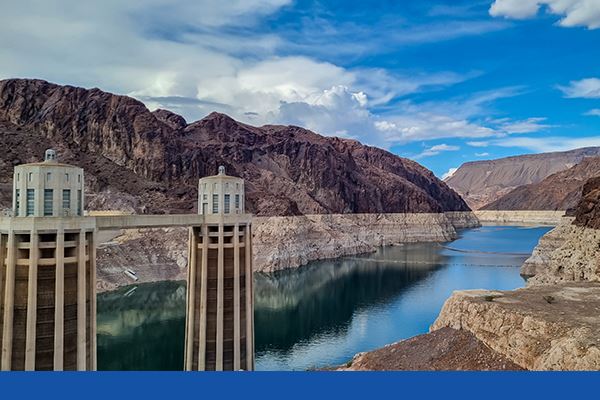A Mountain of Water: The Crucial Role of Snowpack in Our Water Cycle
Mountains are often revered for their rich biodiversity and as hubs for outdoor recreation. However, beyond their aesthetic allure and ecological richness, mountains play a pivotal role as nature’s enormous water towers.
As snow falls on high peaks around the world, it forms a frozen water reservoir called a snowpack. When temperatures rise throughout spring and early summer, this blanket of ice and snow gradually melts, drastically changing the landscape and refilling our drinking water reservoirs.

Straddled along the Continental Divide in the Western United States, Rocky Mountain National Park is home to towering peaks, glacier-carved valleys, and pristine surface waters. In the park’s northern section, the snowpack resting on the Never Summer Mountains serves as the source of the Colorado River.
The role of mountain snowpack in our water cycle is significant, with 50% of the world’s freshwater and 75% of the Western U.S. water supply originating in the mountains!1 However, the reliability of this crucial water supply is at risk due to climate change.
In some regions, 1 °C of warming could cause snowpack to melt more rapidly—up to 30 days earlier each year. While gradual melting is beneficial, as it effectively recharges dry waterways and nourishes plant life, rapid melting poses challenges. Areas most prone to earlier melting with increased temperature include the Western U.S., coastal regions, the Arctic, Central Europe, and South America.2

The Andes—the longest mountain range in the world—stretch along the western edge of South America. In this image, Mount Chimborazo towers over the countryside of Ecuador. Like the Western U.S., the Andes are susceptible to earlier snowpack melting due to increased temperatures.
An excellent example of how a warming climate has made snowpack a more unreliable source of water is the Colorado River, a lifeline in the Western United States. Primarily fed by snowpack, studies show that the river’s flow has been reduced by an alarming 9.3% with each 1 °C (1.8 °F) uptick in temperature. Over the last century, the region has warmed 1.4 °C (2.5 °F).3
To learn more about the Colorado River’s challenges, I encourage you to check out the blog from earlier this year about how Reduced Snowpack Presents New Challenges for America’s Hardest Working River.
So, where does all the meltwater from the mountains eventually go?
- Evaporation: In regions with low relative humidity, a significant portion of meltwater evaporates into the atmosphere.
- Ground saturation and vegetation replenishment: The meltwater seeps into the ground, saturating it and quenching the thirst of the local vegetation. It’s astonishing how a parched environment can absorb vast amounts of water!
- Stream and river recharge: The snowpack is the birthplace of numerous rivers globally. Meltwater rejuvenates these water bodies, ensuring their perennial flow.
- Reservoir refills: Rivers channel the meltwater into reservoirs. These reservoirs, in turn, supply water to large cities and vast agricultural lands, sometimes located hundreds of miles away from the mountain source.

After the Colorado River winds through the Grand Canyon, it empties into Lake Mead, the largest reservoir in the United States. There, it is used to generate power at Hoover Dam and as the water source for large cities such as Las Vegas, Nevada.
Fresh snow will soon blanket the mountains as we approach winter in the Northern Hemisphere, replenishing snowpacks. This seasonal rhythm underscores the profound link between mountains and our water systems. The preservation of snowpacks against the threats of climate change is not just about protecting scenic vistas; it’s about safeguarding our most precious resource—water.
This blog is adapted from an infographic featured in issue #9 of our Mission: Water magazine. Please check it out for more water-focused stories from around the world!

Sources: